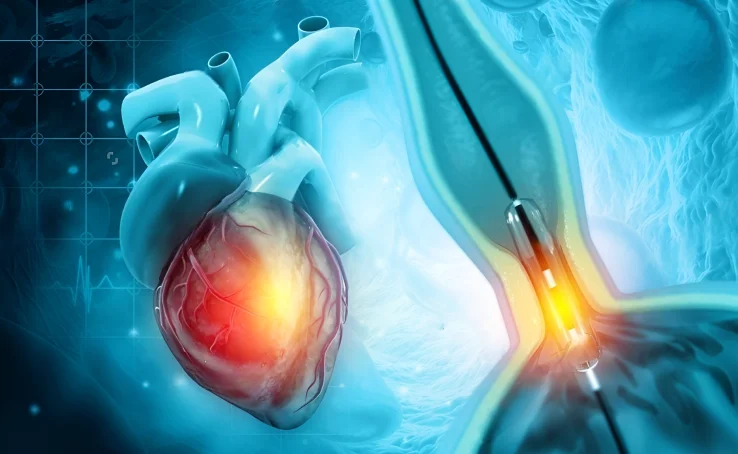Avg Price: $ 106-$ 1840


Treatment Time
Recovery Time
Hospitalization Days
Success Rate
An Angiogram is a diagnostic tool that is typically recommended when there are indications of Coronary Artery Disease (CAD), such as Chest Pain. It is often suggested when other tests like an electrocardiogram (ECG) have hinted at the possibility of CAD. As per a 2005 report from the World Health Organization (WHO), Cardiovascular Disease (CVD) was responsible for 17.5 million fatalities, constituting 30% of the total 58 million deaths globally. In the past two decades, there has been a troubling surge in the prevalence of Cardiovascular Diseases, particularly CAD, and associated fatalities in countries like India and other nations in South Asia. The incidence of Coronary Artery Disease (CAD) among Indians residing in India is 21.4% for individuals with diabetes and 11% for those without diabetes. This emphasizes the high requirement for diagnostic tools such as Angiogram to support timely treatment.
Approximately 250,000 Coronary Angiograms are conducted annually. The primary aim of an this procedure is to precisely locate blockages and determine the appropriate course of action. The precision in pinpointing blockage locations ensures that the treatment is targeted and tailored to the individual patients needs, optimizing the effectiveness of interventions and ultimately contributing to improved outcomes in the management of CAD.
India boasts numerous healthcare facilities that hold certifications from ISO, JCI, and NABH. Some of the world's leading heart surgeons practice in the country. Patients can be assured of high standards in medical imaging techniques like angiogram, eliminating concerns about quality. The proficiency of Indian doctors and nurses in fluent English ensures seamless communication throughout the medical experience. Therefore, people worldwide have excellent chances to access these services from the best doctors for angiogram and best hospitals for angiogram in India. If you're seeking insight, today, we'll shed light on this procedure and its details.
An angiogram is a diagnostic method that uses X-ray images to detect potential blockages within your blood vessels, whether Arteries or Veins. This test enables healthcare providers to observe the blood circulation at specific locations in your body. In cases of artery or vein issues, such as those in the Heart, Neck, Kidneys, or legs, this procedure is conducted to pinpoint the source of the problem.
Coronary Angiogram fall under the broader category of cardiac catheterization, which are the procedures employed for both diagnosis and treatment of heart and blood vessel conditions. Among these procedures, the Coronary Angiogram, primarily used to diagnose heart conditions, stands out as the most commonly performed type of cardiac catheterization.
Why Is Angiogram Needed?
Your healthcare provider might recommend an Angiogram procedure if you exhibit signs of obstructed, damaged, or irregular blood vessels. This diagnostic test aids your provider in identifying the source of the issue and assessing the extent of damage to your blood vessels. It may be suggested in cases where you experience symptoms of Coronary Artery Disease, such as:
Due to the slight risk of complications, angiograms are typically conducted after non-invasive heart tests like Electrocardiograms, Echocardiograms, or stress tests. This procedure allows your provider to diagnose and plan treatment for conditions like:
Take Charge of Your Health
Book a Free Consultation

There are various types of angiograms, each designed to visualize specific blood vessels or areas of the body. The choice of the procedure depends on the suspected medical condition and the area of the body that needs evaluation. Some common types include:
Before undergoing your Angiogram test, your healthcare provider may will review your medical history, do a thorough examination, and conduct a blood test to assess your blood clotting function and ensure proper kidney function. Always consult your provider before discontinuing any medication, especially antiplatelet agents and anticoagulants. Adhere to the following guidelines from midnight the night before your test if approved by your provider:
Your Health is Our Priority
Book a Free Consultation
You may expect following during the procedure:
Following are the potential risks associated with Cardiac Catheterization and Angiograms:
Individuals with a history of allergic reactions to contrast dye may need preventive medication taken at least 24 hours before the procedure. To mitigate the risk of an allergic reaction entirely, doctors may opt for an alternative method instead of the traditional Angiogram.

Your healthcare provider will remove the catheter and apply a bandage to the puncture site on your skin. They will apply pressure to the bandaged area for a minimum of 15 minutes to halt or prevent bleeding. If the catheter was inserted through your leg, it's advisable to rest in bed for four to six hours, reducing the likelihood of bleeding from the incision.
Before you leave, your provider will assess your condition and provide you with instructions for at-home care.
Avail the Expert Health Advice
Book a Free Consultation
You may expect following after undergoing Angiogram:
Angiogram risks are minimal, with complications typically occurring in less than 1% of cases, primarily in the area where your healthcare provider accessed your artery through the skin. According to National Heart, Lung, and Blood Institute, the older adults and individuals with specific medical conditions, such as chronic kidney disease or diabetes, may have a slightly higher risk of complications following an angiogram. A study conducted from August 2012 to July 2013 aimed to evaluate the effectiveness and safety of angiography in 2845 patients. The results revealed an impressive success rate of 97.6% for coronary angiography. Notably, only a minimal number of patients experienced minor hematoma (0.25%), and a small percentage (1.7%) encountered reduced radial pulse 3-4 hours post-procedure.
The cost of Angiogram in India is generally more affordable than Western nations, while still maintaining world-class quality. The average price for such procedures in India is INR 25,000 (USD 313).
| Location | Minimum Cost ($) | Average Cost ($) | Maximum Cost ($) |
| Delhi | $ 122 | $ 341 | $ 1775 |
| Mumbai | $ 127 | $ 354 | $ 1840 |
| Chennai | $ 110 | $ 307 | $ 1595 |
| Hyderabad | $ 106 | $ 297 | $ 1547 |
The comparative cost of Angiogram in India with respect to other countries:
| Location | Average Cost ($) |
| US | $28,200 |
| Singapore | $13,400 |
| Turkey | $4,800 |
| Malaysia | $8000 |
| Poland | $5,300 |
Following are the factors affecting cost of Angiogram in India:
The expenses associated with the preliminary assessments and examinations conducted prior to the angiogram might cover various diagnostic procedures. These additional charges encompass tests such as blood tests, ECG, and other diagnostic evaluations. The total expenses for these tests can vary between INR 1000 and INR 1500.
MedFlick, your trusted healthcare companion, is dedicated to ensuring that your medical journey goes as smoothly and successfully as possible.
Fostering expertise backed by commitment, resilience and years of experience, we connect you to a wide network of India's best doctors
Explore the most advanced, reputable and trusted hospitals in India, offering the highest levels of clinical and surgical excellence

The worlds most trusted personalized health community with more than 1,00, 000 members that share their journey, experiences and health insights. Join your community and get access to make informed health decisions.
Explore



